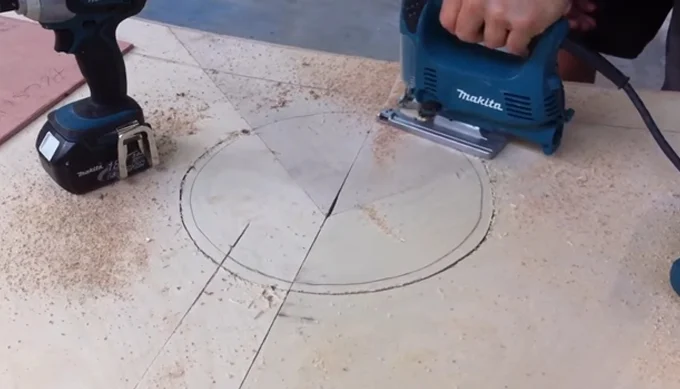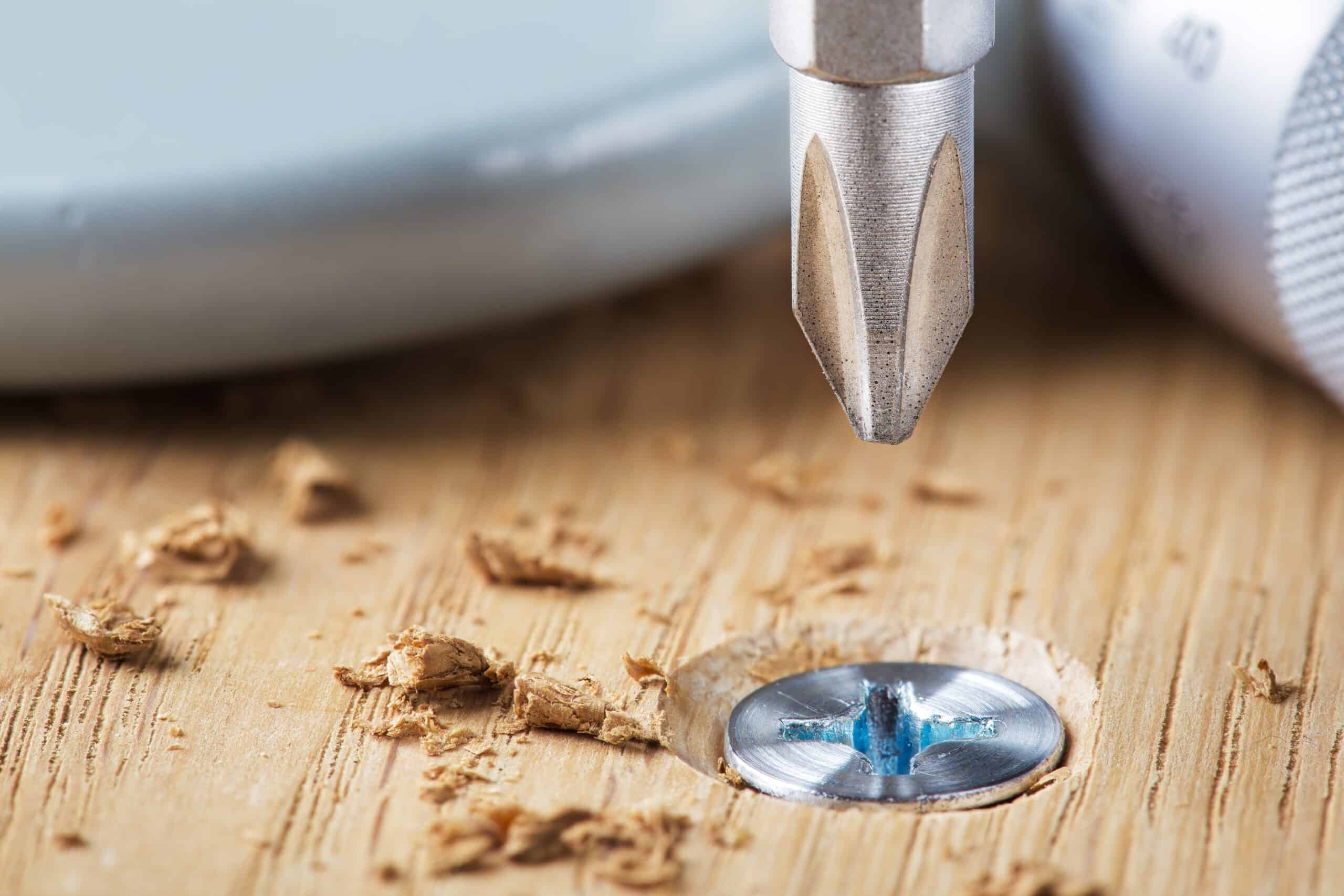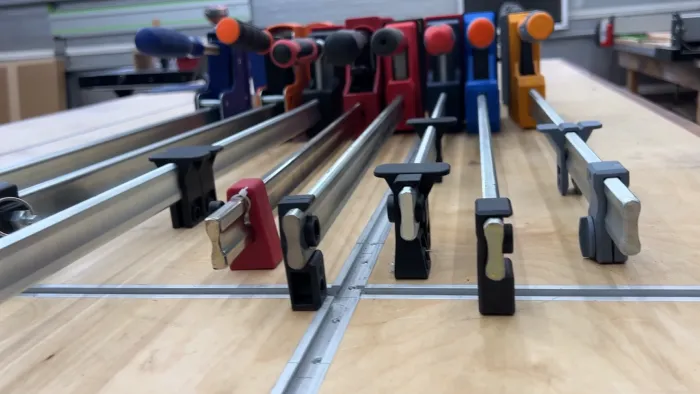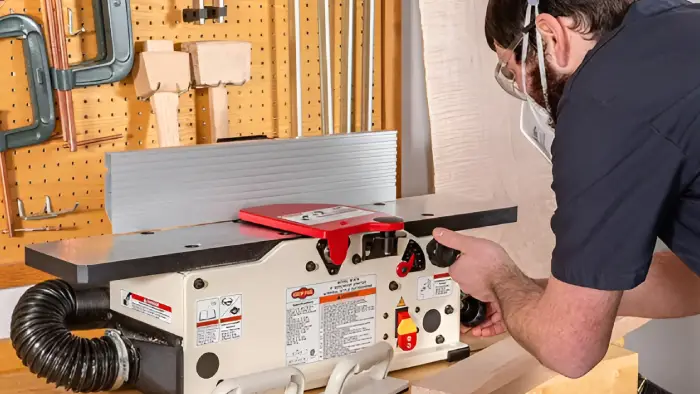WoodenuKnow.com is a participant in the Amazon Services LLC Associates Program, an affiliate advertising program designed to provide a means for sites to earn advertising fees by advertising and linking to Amazon.com and may earn from qualifying purchases.
If you’ve ever wondered why your jigsaw is smoking, you may have been worried that something was wrong. This is a prevalent question among woodworkers, and there are a few possible explanations. It’s imperative to understand that jigsaws create heat while running, which can build up quickly.
More details will be provided about this later in the piece, but there may be other reasons to know as well. As you read this article, we’ll explore various reasons behind smoking jigsaws and what you can do to mitigate the issue.
We also intend to answer some of the frequently asked questions to help you better understand. Having said that, it would be great to get started.
Why is My Jigsaw Smoking : Symptoms and Causes
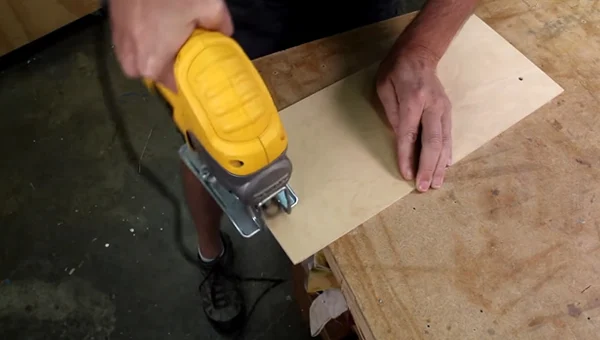
There are several reasons this could happen, but we’ll touch on the most common ones below. If you’re having trouble with either of these scenarios, be sure to read until the end. There’s a chance you can fix the problem yourself without taking it apart.
Overloaded Jigsaw
The cause of the smoke is usually an overloaded jigsaw. This happens when too much electrical current flows through the wires of the saw. Jigsaw smoke can be a serious problem because it can cause the wires to overheat and fire. If you have ever seen smoke coming from a saw, unplug the saw and allow it to cool down before continuing to use it.
You should ensure that you are not overloading the circuit by plugging too many appliances into one outlet. These precautions can help prevent jigsaw smoke and protect your home from fire.
Not Tight Enough Blade
Jigsaws are a versatile and powerful tool, but if the blade is not tight enough, it can cause smoke to appear. This is because the teeth of the blade are not properly engaged with the material you are cutting.
The blade will heat up from friction and can create smoke. A loose blade can cause the jigsaw to vibrate, which can also lead to smoke.
If you notice smoke coming from your jigsaw, stop using it immediately and check the blade. Make sure that it is properly tightened before continuing. Otherwise, you risk damaging the saw or causing a fire.
By taking a few moments to ensure that the blade is properly tightened, you can avoid these potential problems and keep your jigsaw running smoothly.
Inadequate Sawdust Removal
Sawdust is made up of tiny particles of wood, and when breathed in, it can irritate the lungs and cause difficulty breathing. Inhaling large quantities of sawdust can even lead to lung cancer.
For this reason, it is important to properly clear sawdust after using a jigsaw. Even if the sawdust is cleared away, it can still pose a risk if it is not disposed of properly.
If the sawdust is left in an enclosed space, such as a garage, it can continue to release harmful particles into the air and cause jigsaw smoke. Therefore, it is important to be aware of the potential dangers of jigsaw smoke and take steps to avoid it.
Possibly a Motor Problem
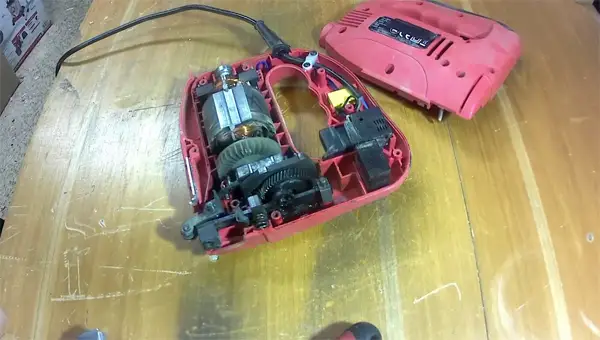
One of the most frustrating things that can happen when working on a jigsaw puzzle is finding that the pieces don’t fit together as they should.
This can often be caused by a problem with the motor, which can cause the pieces to smoke. If this happens, it is vital to turn off the jigsaw and unplug it from the power source.
Once it has cooled down, check the motor for any damage. If there is damage, it will need to be replaced. If the motor appears in good condition, it may just need to be cleaned. Dust and other debris can build up on the motor over time, causing it to run less efficiently.
A quick cleaning with a soft cloth can often help to restore the jigsaw to its proper functioning. In summary, a motor problem can cause jigsaw pieces to smoke, but this can usually be remedied with a little troubleshooting.
Defected or Blunt Blades
Blades that are not sharp enough can cause the jigsaw to overheat, leading to smoke and potentially damaging the tool.
Worn-out or damaged blades can also cause the jigsaw to bind, making it difficult to use and increasing the risk of injury. To avoid these problems, it is important to inspect your blades and replace them as needed regularly.
You should also follow the manufacturer’s instructions for proper blade maintenance. Taking these simple precautions can help ensure that your jigsaw always runs smoothly and safely.
Defective blades are one of the most common causes of jigsaw smoke. If you notice that your blades are starting to wear down, be sure to replace them as soon as possible.
Defective Power Cord
A deteriorated power cord is often the culprit behind smoke coming from jigsaws. When the insulation on the cord becomes damaged, it can allow electricity to arc between the wires, producing heat and smoke.
The cord may even catch fire, so it’s crucial to inspect your power cord regularly and replace it if it shows signs of wear and tear.
If you use your jigsaw frequently, it’s also a good idea to keep a spare cord on hand so that you can quickly swap it out if necessary. If you follow these easy precautions, you can help to prevent jigsaw smoke caused by a damaged power cord.
Misaligned Fence
When a fence is not properly aligned, it can cause jigsaw smoke. Jigsaw smoke results from the saw blade hitting the ground and creating friction.
This friction produces a lot of heat, which can damage the blade and cause the saw to smoke. Jigsaw smoke can be dangerous to inhale. The fumes can contain harmful chemicals that irritate your respiratory system.
If you are working with a saw producing jigsaw smoke, it is important to stop immediately and correct the alignment of the fence. Once the fence is aligned correctly, you can resume your work and avoid further damage to the saw or your health.
Material Thickness
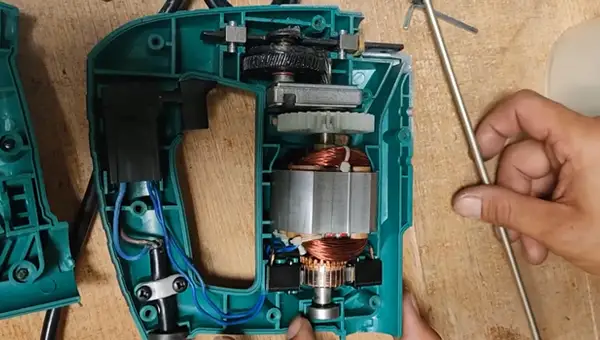
When it comes to jigsaw smoke, thickness matters because the thicker the material, the more heat is required to cut through it, and that extra heat often results in more smoke.
So if you’re cutting a lot of smoke-sensitive materials, such as plywood or MDF, it’s crucial to choose a blade that’s appropriate for the thickness of the material.
For example, a thinner blade will produce less smoke when cutting through thin plywood. But if you’re cutting thicker lumber, you’ll need a thicker blade to prevent the material from overheating and producing too much smoke.
Jigsaw blades come in various thicknesses, so it’s essential to select the right one for your project. Doing so can help minimize the amount of smoke produced and create cleaner, healthier cuts.
Lack of Lubrication
When using a jigsaw, it’s essential to ensure that the blades are correctly lubricated. If they’re not, this can lead to increased friction and heat build-up, which can eventually cause the saw to smoke.
Besides being a fire hazard, this can also damage the blades and potentially injure the user. To avoid these risks, it’s essential to lubricate the blades before each use properly.
This can be done with various lubricants, such as WD-40 or machine oil. Once the blades are coated, they should be allowed to rotate for a few seconds to ensure that the lubricant is evenly distributed.
After that, the saw can be used as usual. These simple steps will help keep your jigsaw in good condition and prevent accidents.
How Do I Know If My Jigsaw Blade is Dull?
A dull blade might be causing your jigsaw to smoke. If you’re unsure whether your jigsaw blade is dull, there are a few things to look for. See if it’s taking more effort to make cuts. If the blade feels like it’s catching or skipping, that’s a sign that it’s not as sharp as it used to be.
You may also notice that the cuts are not as clean or precise. If you’re experiencing any of these issues, it’s time to sharpen or replace your blade.
There are a few ways to sharpen a jigsaw blade. You can use a sharpening stone, file, or rotary tool with a grinding attachment. If the blade is dull, you may need to replace it.
When shopping for a new blade, be sure to get one compatible with your saw and the type of material you’re cutting. With a sharp blade, you’ll be able to make cleaner, faster, and more precise cuts.
How Often Do You Change The Jigsaw Blade?
How often you need to change the blade will depend on how often you use the saw and the type of materials you are cutting. If you are using the saw daily to cut through rigid materials such as metal or concrete, you will need to change the blade more frequently.
To prevent jigsaw smoking caused by overpowering, only use it to cut through wooden or plastic materials. You can extend the life of your blades by cleaning them after each use and storing them in a dry, protected environment. With proper care, your jigsaw blades can last for many years.
Is a Jigsaw Safe to Use When it Smokes?
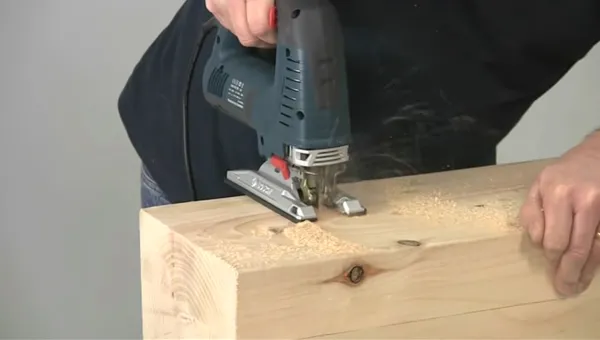
If a jigsaw starts to smoke, it’s important to stop using it immediately and unplug the tool. Smoking indicates that the motor is overheating and is at risk of catching fire. Allowing the jigsaw to cool down for a few minutes before restarting it can help to prevent this from happening.
Be sure to keep the jigsaw clean. A build-up of sawdust can also cause the motor to overheat, so it’s important to clean the tool regularly. Jigsaws can be a reliable power tool with a little care and attention.
How Do you Lubricate a Jigsaw?
As a precaution against jigsaw smoking, it is crucial to lubricate your jigsaw before each use properly. This will help extend the blade’s life and prevent it from overheating.
The best way to lubricate a jigsaw is to apply a few drops of light oil to the blade before each use. The oil will help to keep the blade cool and prevent it from binding in the scroll.
It is also essential to wipe down the body of the saw after each use. This will remove any debris that could potentially damage the mechanism. By taking these simple steps, you can ensure that your jigsaw will provide years of trouble-free performance.
How Do You Cut a Corner with a Jigsaw?
Start by drawing a line on your workpiece where you want the corner to be cut. For best results, use a pencil or other sharp object to score the line into the wood. This will give you a more accurate starting point for your cut. Next, clamp your workpiece down securely, so it doesn’t move during cutting.
Select the appropriate blade for your material and type of cut to avoid smoke from the jigsaw. For most woods, a general-purpose blade will suffice. If you’re working with thicker stock or more rigid materials, you may need to use a heavier-duty blade. Now it’s time to start cutting. Slowly guide the blade along your marked line, using steady, even pressure.
To make a clean corner cut, you’ll need to use a little finesse. As you get close to the end of the cut, rotate the saw so that the blade is perpendicular to the workpiece. Then finish the cut by carefully following the contour of the wood. With a bit of practice, you’ll be able to make perfect corner cuts every time.
In Few Words
While a jigsaw can be a great addition to any workshop, it’s also necessary to use it properly. A jigsaw can be a safe and valuable tool with proper care and safety precautions. With the outline mentioned in this article, we hope that you now understand why your jigsaw is smoking and how to fix it.
If you see your jigsaw smoking, it’s essential to stop using it immediately and allow the saw to cool down. Once it’s cooled down, you can check the blade to see if it needs to be replaced. If the blade is still in good condition, you may just need to adjust your cutting technique.
Be sure to use the appropriate blade for your material, and take your time when making cuts. With a bit of care and practice, you’ll be able to avoid smoking jigsaws altogether.

